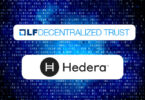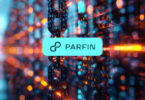In celebration of Hyperledger‘s fifth birthday today, we interviewed IBM‘s Vice President of Blockchain (and more), Jerry Cuomo.
He shared his views on Hyperledger’s accomplishments and open source in general. Such as the impact of Amazon’s choice of Hyperledger Fabric for its Managed Blockchain offering. Cuomo also looked to the future and his vision of blockchain enabling greater trust in AI.
Question: What do you think are Hyperledger’s biggest achievements to date?
Jerry Cuomo: I’d say two things. The ecosystem around it. So the community that has been formed around it. And I think with that it’s the way we work as a team has all of the markings of the Linux Foundation. Like from a governance perspective. It’s a wonderful thing on a good day. And it’s a nagging thing that drives you nuts on a bad day for all the right reasons. So the governance process has led to some of the best code, not just blockchain, but just in the lineage of the Linux operating system.
The process of graduating code across a bigger community is masterful. And I think that was a great decision by the founders to go with the Linux Foundation to grow enterprise blockchain.
And five years later, we see some of the most mature code for enterprise blockchain. Which gets to the second biggest accomplishment in five years, the production networks.
When you look at some of our favorites that are using Hyperledger technology, for example, Hyperledger Fabric being used by the blockchain community initiative in Thailand across all the major banks to do letters of guarantee. The Bank of Thailand is extending the network after a couple of years of production to include bonds. They call it scripless bonds.
Other geographies around the world have really embraced blockchain right behind the Thai community. Brazil, the country’s first birth certificate issued on a blockchain a year or so ago, was on a Hyperledger blockchain.
So when you look at the community, the governance producing some of the best enterprise code leading to adoption in the enterprise, across banking communities, governments in Brazil and many things in between. That’s what I smile about when I look at the five-year anniversary.
Question: So who do you think has gained more? Do you think IBM’s gained more from Hyperledger or the other way round?
Jerry Cuomo: IBM has brought a lot of intellectual capital to Hyperledger, starting with the fact that we were their earliest to actually donate code and the rights that go along with the code.
So we’ve donated a lot of intellectual property, a lot of developers’ time. At some points we’ve had some 75 developers working on code. We contributed core technologies around zero knowledge proofs that IBM and the world leaders in cryptography in our Zurich Lab providing the toolkit for zero knowledge proofs to Hyperledger.
That pays dividends in other significant contributions to Hyperledger from other companies like State Street.
But on the other side, there are contributions that keep the project maturing. Like translating the documentation into other languages. So that intellectual capital that IBM initially brought forward, germinated, and led to other intellectual capital being built with and around it by others.
Market adoption of Hyperledger has contributed to the growth of our Global Business Services Blockchain Services practice worldwide. We’ve worked with clients big, small and everything in between from the early days. Some of the early adopters are still running strong. In fact, many of them are. Some of them have come and gone, but many of them have been seeded through the IBM Services business. And that builds on itself.
And it informs the technology, informs some of our co-created networks, like the food safety network (IBM Food Trust), TradeLens, Trust Your Supplier Network and leading to things like the Digital Health Pass, which is helping provide verifiable health credentials.
It all feeds on each other and it’s a two-way street. I think we’ve given a lot, as have other Hyperledger members and we’ve also gotten in return.
Question: Most businesses have this challenge in open source projects: How do you decide what to contribute back and what to keep. Do you have a model for that?
Jerry Cuomo: The model is something we evaluate on an ongoing basis.
But if you start with the core technology. The core technology has to be functional. You can’t say we have a permissioned blockchain system and we’ve put out a framework, but the actual permissioning technology is something you have to buy. You can’t (do that).
The technology has to be sustainable. It has to do something out of the box as open source. So you have to take it to a logical MVP (minimum viable product). It has actually to do something of value end to end.
Then hard decisions come, like zero knowledge proofs, as an example. Some of the key features around cryptography libraries, how the ledger is stored and how that’s done robustly.
Life cycle management, things that people would find boring. Like how do you update a smart contract? Yes, smart contracts are like any other piece of software. There’s a life cycle. They get deployed and patched and updated. All of that has been part of the open source.
IBM business model 1: distributed governance
Now we drew the line to say, we’re going to create on top of that, a turnkey solution that majors in multi-party governance. So on top of Hyperledger Fabric, we invented a distributed governance system. Perhaps the first distributed network management software where everyone has control, but no one is exclusively in control.
So through the IBM Cloud, you can start with a delightful web experience. In fact, that experience won the Red Dot award, which is a big thing in the design world. And you can then have members whether they want to run their own instances in another cloud of choice or running on their own premises.
Now that network can start building. And the members of the network could referee things like voting, almost like doing smart contracts for basic network management. Like who gets to say that the smart contract is ready to be updated? Well, it should be a network policy that the members of the network vote on. How do you include a new member in the network, a new organization in the network? Again, that should be brought to policies.
IBM business model 2: Commercial distributions of open source
So the IBM commercial offering builds this network governance layer on top of the 100% open source foundation. And we sell that plus along with that, a commercial distribution of the open source.
And that’s a big deal too, the commercial distribution and open sources.
Many regulated organizations that are participating, they can’t just take random builds of an open source project and deploy it. They need a single throat to choke for support and maintenance of that code. So we provide that commercial distribution of Hyperledger Fabric. Meaning, we’ve picked the right build from open source. We’ve run a battery of tests against it. We ran our certification against it. We then sign and seal it digitally so that we know this is the version we picked. And this allows us to provide a worldwide SRE (site reliability engineering) team to support it.
So that’s the dividing line. We decided the control plane, if you would, is out there as open-source. The management plane is something we’ve decided from a platform perspective, we’re going to commercialize.
IBM business model 3: Commercialize blockchain-based businesses
Of course, there’s other dimensions. Like commercializing some of the businesses we’re building on top of blockchain. Like the Food Trust Network as just one example. Or the work that we’re doing around the IBM Digital Health Pass. So these are applications that we’re building on top of the network along with the cohorts that are part of that, are monetizing.
So there’s different levels of it. But it has to start with that open source kernel.
Open source creates competition
I would say that one of our best days and worst days in that five-year history was the day Amazon decided to embrace Hyperledger. It was a terrible day because we had instant, huge competition.
But it was a wonderful day because by adopting Hyperledger and specifically Hyperledger Fabric as the foundation for Amazon’s Managed Blockchain, they validated everything we stood for in Hyperledger for the past years. So that’s the beauty of open source. The customer wins every time when there is choice.
So now that Amazon and Oracle and other vendors have blockchain platforms that are built on the same open source, it both validates your choice, but also gives the client (choice). It’s like, they’re not marrying the vendor. They’re dating the vendor and they can switch to other vendors in that ecosystem. And that’s very powerful.
The other thing that happened when Amazon embraced it, their price point was significantly lower than ours and we lowered our price. So competition. And so it’s a great thing for the buyer.
Question: On the topic of different cloud providers, IBM enabled groups to set up a blockchain network that could work multi-cloud. You did that pretty fast as well. So how did you go about doing that? What was your thinking behind that? And do you think that’s paid off?
Jerry Cuomo: We did it fast, but we did it with extreme religion. And in a sense, we had 34 billion reasons to go with the multi-cloud approach. And what I’m alluding to is Red Hat.
As we continued our collaboration with Red Hat, as the poster child for how to do open source right. And looking at our cloud strategy and re-examining our cloud strategy and ultimately Arvind Krishna, who by the way, was the founding father of blockchain at IBM, went on to do cloud and orchestrated the Red Hat acquisition. And now is the CEO of the IBM Corporation. There is a linkage there. Arvind was there on day one of Hyperledger. He was a major driver to do that work. At the time, he was the head of IBM Research, pushing that we put out our research technology in the open.
So the multi-cloud story was dovetailing with our approach around Kubernetes containers, and really extending the IBM cloud strategy to run anywhere. And it’s a good day when you think about the operating system for the cloud being Kubernetes and that Red Hat has the industry leading Kubernetes commercial distribution in OpenShift. And OpenShift is vibrant on the IBM cloud. Also vibrant on Azure, Google Cloud and AWS.
So Red Hat has very good relationships with what at the time were our competitors. But I think now they are as much our partners. So we followed suit very quickly with blockchain to adapt containers as a way to distribute the nodes in a blockchain network. And then OpenShift as the way to distribute a commercial deployment for our IBM Blockchain product.
I remember at last year’s Re-Invent conference, Vertex which is an oil and gas company and they’ve co-created an oil and gas tracking network.
And their observation was the locus of energy – no pun intended – of those propane companies were doing business on the Amazon Cloud. So when they deployed their network, they wanted the locus of energy of that blockchain network to be on Amazon. And they turned to us because we didn’t flinch with respect to blockchain, our blockchain network running on that or any cloud.
But then when they came to us and said, it’s a deal-breaker. This major provider, it’s going to be prohibitive for them to get approved to run on Amazon. They need to run the node in their data center. We were able to accommodate that, to run it on their private cloud.
And yes, it’s true that almost every enterprise has multiple clouds, but their private cloud is something that they do with extreme thoughtfulness.
And following suit with the Red Hat approach to multi-cloud for Hyperledger and Hyperledger Fabric seemed like a natural thing to do.
And it has really helped us to bring blockchain to customers where they are, versus having them come to blockchain, if you know what I mean? So it’s helped in that fashion, like reducing friction. It’s one less thing that they have to go convince people that they have to do differently.
Question: Particularly in the last week, one of the things that grabbed a lot of headlines is the institutional adoption of digital assets. And Fabric isn’t really a token solution. So what is your approach to tokens?
Jerry Cuomo: There’s two approaches here. Many of the networks that are built on Fabric are tokenizing assets. It’s true Fabric does not yet have a programming construct called tokens or a framework that makes it a domain specific type of asset to write. But that hasn’t stopped many of our users. They’re building networks around their digital assets.
True Tickets is a great example, creating a digital asset in a ticket. I think they had some recent really interesting announcements about how they’re expanding their network. But that is a digital asset, a ticket that has an owner. It has rules about if it can or can’t be divided, all of that.
So the first response is that there are many Fabric networks. And I think one of the best examples now are things that are happening around looking at information as a digital asset. Like the MiPasa network and how it’s providing provenance for information on COVID. It’s an interesting type of digital asset. Maybe not a monetary asset, but a valuable type of asset, information.
So there’s different classes of assets and certainly the more monetarial ones have been explored on Fabric. But again, I don’t want to overplay the fact that it doesn’t go out of its way to provide a framework for it yet.
Network of Networks
That said, Fabric is software. I hate to trivialize things. But think about building a mobile application today. Every modern mobile application uses about 12 classes of APIs. A blockchain solution is not too different.
So in a commerce application, you can imagine using a ledger to store your inventory, maybe even some information about your supply chain. You probably won’t in this modern age, do payments yourself. You’ll delegate that to an API on a payments network. So you might use PayPal as an example, and use the PayPal APIs to do payments. Again, in this modern day and age, you’re probably not going to do shipping and logistics yourself. You’ll probably outsource that to FedEx or UPS or a provider like that. And then you can multiply that out to 12 things and you’ll get your classes.
Building a blockchain solution is no different. So it’s quite common to see networks integrating. So that you might have the main part of your commerce exchange and your supply chain being done with a Fabric based ledger. But if you want to exchange digital assets, you might use an Ethereum or some instance of Besu. So these things are completely plausible. If you’re looking for a pure decentralized solution.
So while Fabric may not have an express framework for doing digital assets, other networks do. And all of these networks have APIs. All of these networks could be programmed and used. So, I think this is the way I look at it.
Any kind of mashup application, like a mobile application, if you need something domain specific around payments and discreet asset exchange to emulate money, just use one of those networks that have been built expressly to do that.
We’ve been doing work with a number of such networks like Hedera. They’re part of Hyperledger and looking at integration with their HBAR and some really interesting things happening on that front.
So the notion as we go into 2021, we’ve been talking about networks of networks since probably the last three years. But I think that that is becoming more plausible. I think people have chilled out now. It’s not going to be one network to rule them all or one framework to rule them all. No more like there’s one API to rule them all.
There are discrete domains where networks are built to excel and users who are building solutions should use.
Question: What are your predictions for enterprise blockchain in 2021 and beyond
Jerry Cuomo: I think blockchain is graduating to, if I could put it this way, to be normal again. Meaning, I think it’s been sensationalized for so long, I think it’s looking forward to being a normal part of an IT process. And I see two areas.
So this notion of blockchain inside. You’ve heard of Intel inside where, yes, you know it’s there. But it’s about the computer. Yes, you know, there’s a chip in there. So I think blockchain is following suit in 2021. ‘Blockchain inside’ some key things. And it can’t come a moment too soon.
One of the areas that I’m focusing on a lot these days at IBM is automation. And blockchain inside automation we see as amazing in a sense that as companies look to optimize, to take advantage or to cope with maybe not having their employees all on hand. Automating mundane tasks. But also they’re using AI to enhance employees, to make them superhumans is quite timely right now.
We see in 2021, a good part of IT spend will be on automation and AI. So the thing about blockchain is typical automation technology stops at a company’s borders. Blockchain allows automation through smart contracts to be extended beyond a company’s borders. And clearly examples of supply chain are great examples of blockchain extending automation beyond a single company and really working out across a company’s ecosystem.
So enabling that level of automation, number one.
Blockchain to enhance trust in AI
Number two, I mentioned AI. You know, as a set of technologists just watching what’s happening in the world around trust. AI needs a food label. As things mature, whether it’s food or drugs or whatever, you can look at a label to say, okay, what’s in this thing? Where did it come from?
And AI needs that as we speak, to get it to the next level of adoption. I see in 2021, blockchain inside being used to really provide the provenance. And adding another level of trust to core technologies like AI and IOT, which we’ve become so reliant on.
But as we bring them to the heart of things like information like MiPasa and the coronavirus. Getting to data. Knowing that this data is authentic and came from this hospital is going to be critical. That this person has been vaccinated, that’s all going to be critical. Knowing that the doctor’s recommendation and the AI bot that is helping advise that doctor… Who trained that AI? I think having that provenance is critically important.
And I think blockchain inside will directly and subtly switch the world from solely depending on reputational trust. And coming from a hundred plus-year-old company like IBM, I don’t want to undersell the value of reputational trust.
But adding algorithmic trust along with reputational trust, will propel the world of IT to move faster. And I think that’s what I see coming in 2021.
Blockchain inside extending trust models. Like for automation to go beyond your borders. Like getting underneath AI so that there’s like a food label there, we can see where it came from. Who built the model? Who trained the model? Did it drift? Who enhanced the model? And blockchain bringing that, not just reputational trust, this was done by good people, but I can now prove it too.
That’s where I see things going in 2021.
So, you know, five years went by very quickly here. And I think what the Hyperledger project has done, in the shadow of a great institution of the Linux Foundation, is really a great example of communities coming together. The very strong, as I said, sometimes tedious governance process that ultimately helps you build the best code.
I mean when you get a call from the security lead for Hyperledger. And he wants to talk to you about the security of Hyperledger Fabric. You take a deep breath and say, Oh my God, do I have the energy to have this conversation? But it’s a good thing. And this is part of the process that they bring. Code inspections, test case accountability in your code, visibility, the provenance of the code. So we know who’s been contributing.
I think that whole process has led to this set of milestones in deployed networks, in diversity of technologies, in diversity of companies now creating economy – working alongside our competitors as we collaborate, there are good days and bad days – but it’s good for the customer.
I think all of that, I think it’s a lot of progress in a few years.






